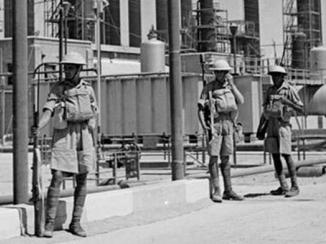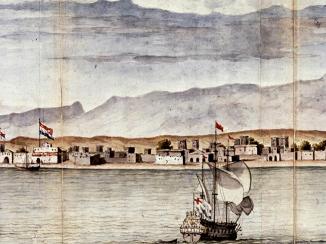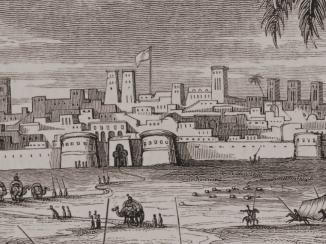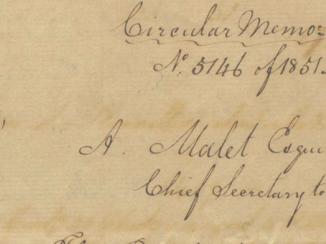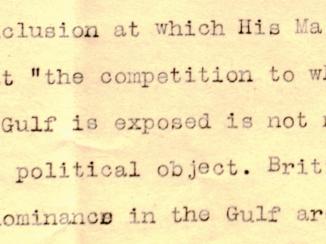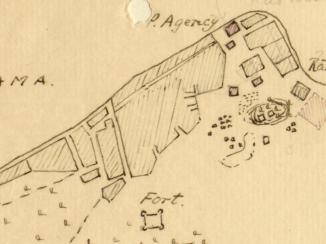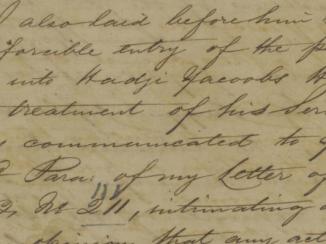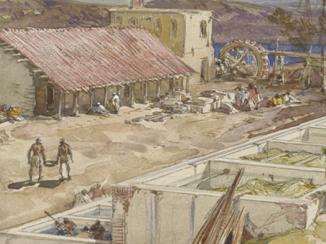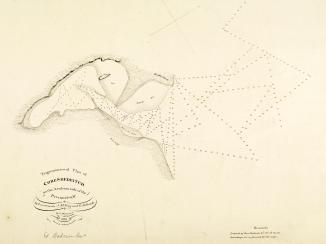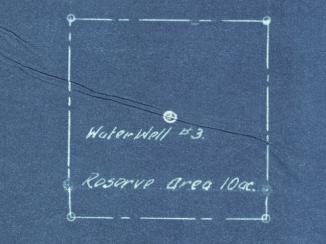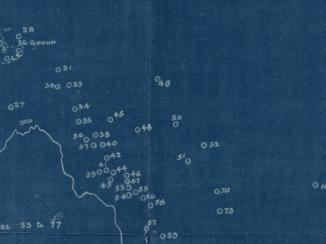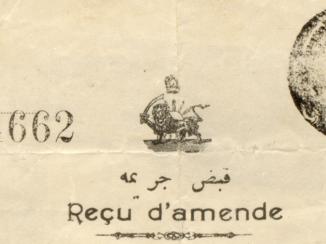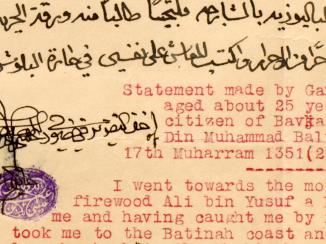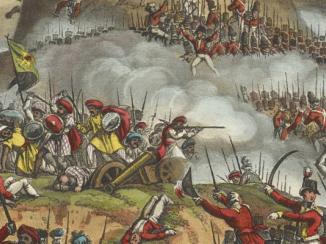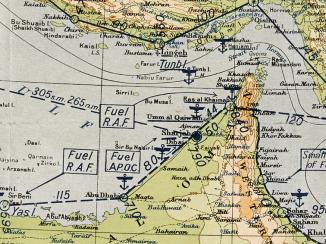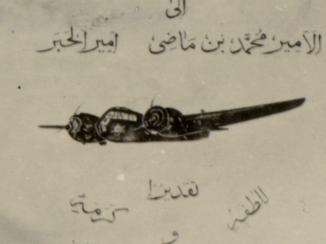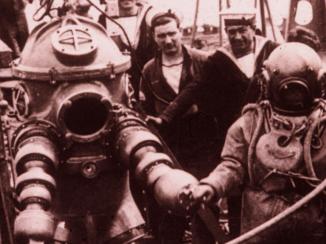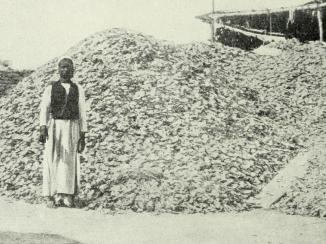Overview
The history of Britain’s administration in the Gulf spans nearly two centuries, from 1763 to 1947. Hundreds of thousands of letters were sent and received by a succession of Residents and their staff. How this correspondence was composed, sent, received, organised and stored, changed dramatically over time.
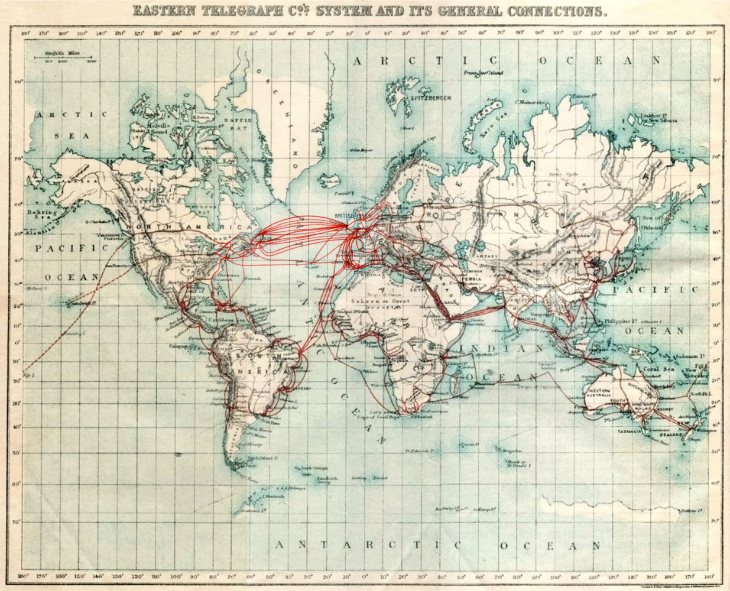
For most of the nineteenth century, correspondence sent to and from the Residency An office of the East India Company and, later, of the British Raj, established in the provinces and regions considered part of, or under the influence of, British India. was copied by hand into correspondence copy books (and translated from the Arabian or Persian original where appropriate), by a team of clerks and munshis A term used in the Middle East, Persia and South Asia to refer to a secretary, assistant or amanuensis. Munshis were employed in the British administration in the Gulf. . Their work was facilitated by a constant supply of blotting paper, quills, black ink power, shining sand and Indian rubbers.
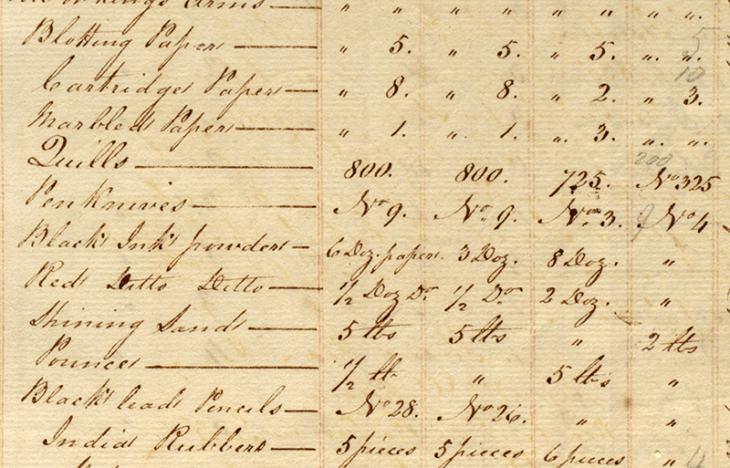
The Telegraph and the Typewriter
It was not until the latter part of the nineteenth century that two new technologies started to change the way in which the Residency An office of the East India Company and, later, of the British Raj, established in the provinces and regions considered part of, or under the influence of, British India. in Bushire communicated with the Government in Bombay. The first of these was the Indo-European Telegraph Line, which threaded its way from London, across mainland Europe and Asia Minor, before passing through Bushire, and onwards to Karachi and Calcutta. The Indo-European Telegraph began operations in April 1870.
The second significant innovation was the typewriter, invented in the United States in 1867 by Christopher Sholes and Carlo Glidden. The pair licensed the mass production of their invention to the arms manufacturer E. Remington and Sons in 1873. Early typewriters started to appear in the offices of British officials in the Gulf sometime in the 1880s. An added benefit of the typewriter was that, with the use of carbon paper, copies of letters could be created with the original, thus reducing the need for copies to be handwritten in copy books.
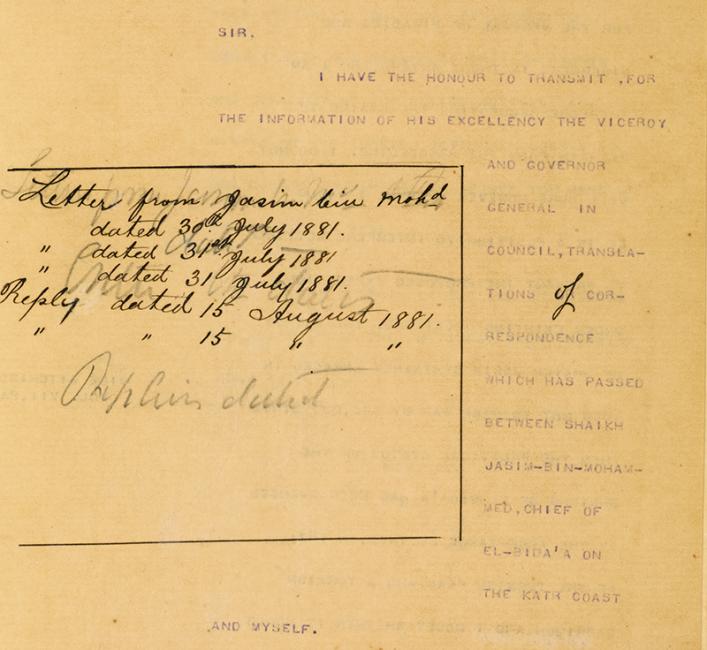
Early Telegraphic Communication
The Indo-European telegraph line’s impact was limited to begin with. Early telegraphs were expensive to send (up to £5 for a twenty-word message), had to be sent and received in Morse code and could take several days to reach their destination, if they reached it at all. And, because each message had to be re-transmitted a dozen or more times en route – often by operators with no knowledge of English – telegraphic communications were prone to arriving in a garbled state. For example this message, received at the Residency An office of the East India Company and, later, of the British Raj, established in the provinces and regions considered part of, or under the influence of, British India. in 1879, was taken down as: ‘Avaide employing Andreas bout bistish museaum.’

Although typewriters helped standardise the way in which letters were presented (for which archivists, as palaeographers, have been eternally grateful ever since), they did not change how letters were dispatched. Government officials in India and the Gulf had to wait until the early twentieth century for the introduction of the teleprinter, which combined the ease of creating letters on a typewriter with the speed of telegraphic communication.
Advances in Technology
In the early decades of the twentieth century, British officials extended their administration over the Gulf through continued technological improvements and the increased speed and reliability of the telecommunications network. The introduction of wireless telegraphy, for example, first pioneered by Guglielmo Marconi in the 1890s, paved the way for telegraphic communications to be established between Bushire and Bahrain, Muscat and Sharjah.
This allowed the Resident in Bushire to communicate directly on a daily basis with his agents around the Gulf. On top of this, improvements in teleprinter technology meant that letters could be sent by the Resident to one agent, with copies sent to the others. The result was a dramatic increase in paperwork. Maintaining correspondence on a strictly chronological basis became increasingly impractical. Instead, Residency An office of the East India Company and, later, of the British Raj, established in the provinces and regions considered part of, or under the influence of, British India. staff organised correspondence into files arranged by subject, and used office notes and annotations to cross-reference related items.

The changes to the ways in which British officials communicated with each other between 1870 and 1920 transformed how records were created, stored and organised at the Residency An office of the East India Company and, later, of the British Raj, established in the provinces and regions considered part of, or under the influence of, British India. in Bushire. As correspondence copybooks evolved to become miscellaneous collections of typewritten and carbon-copied letters, handwritten notes, printed materials, and telegram slips, each Resident found himself confronted with an ever-changing set of circumstances that dictated how he corresponded with colleagues in distant places, and how he organised his ever-growing archive of paperwork.

